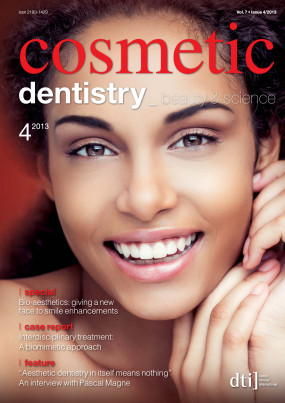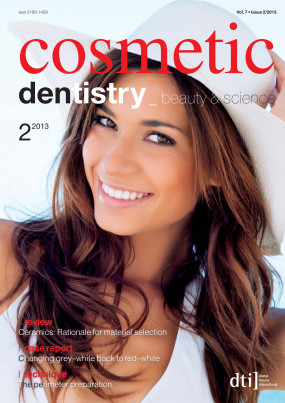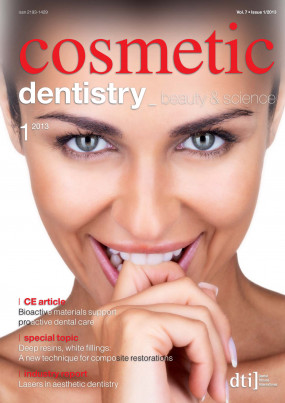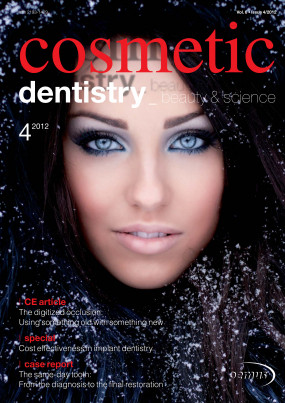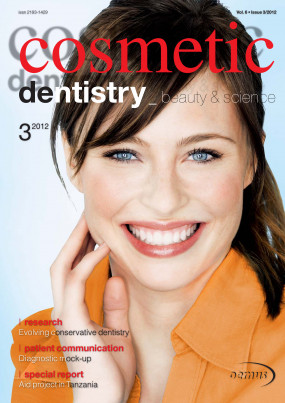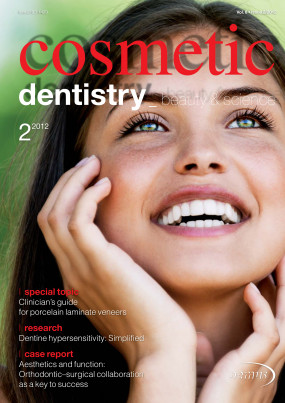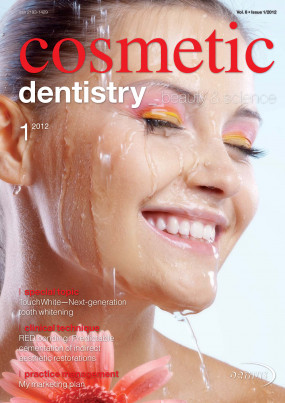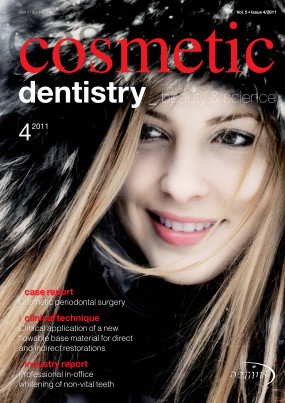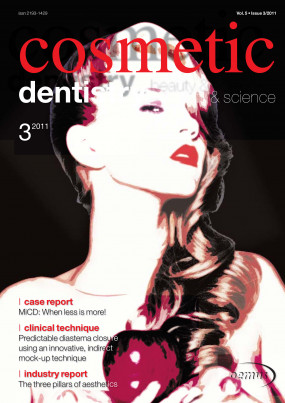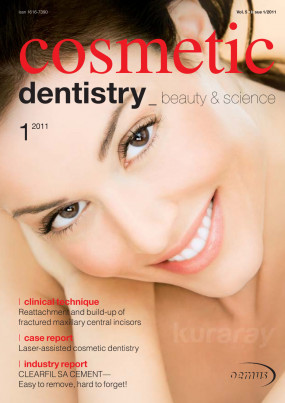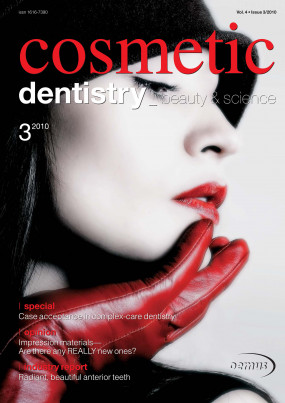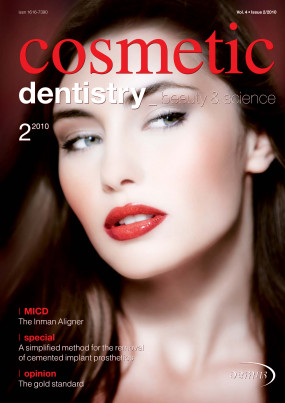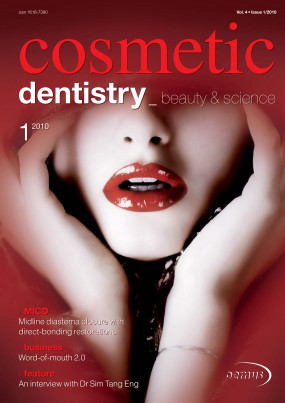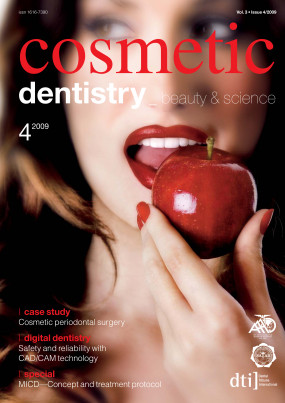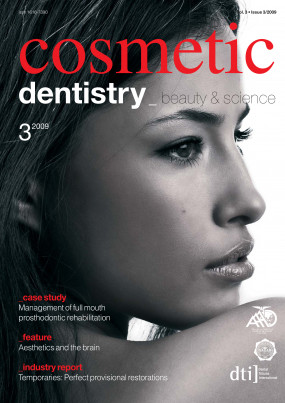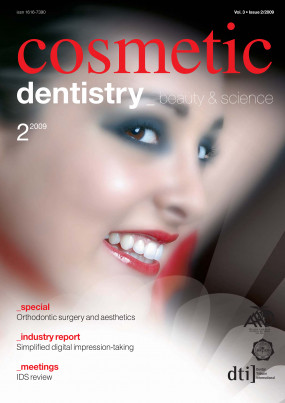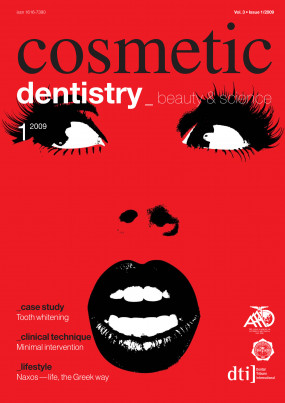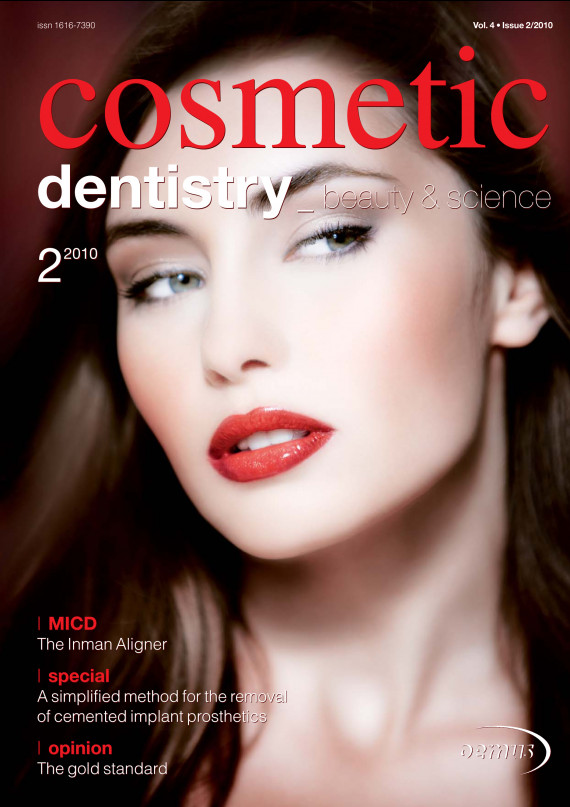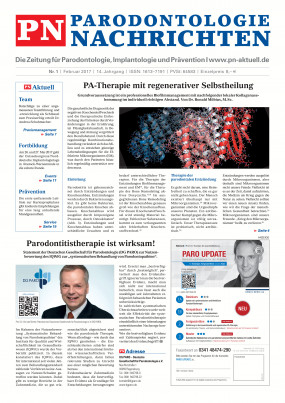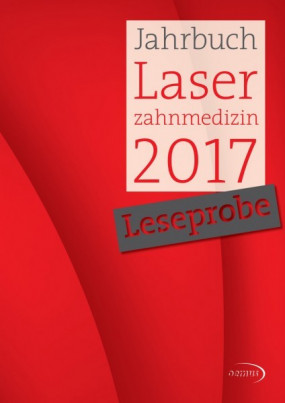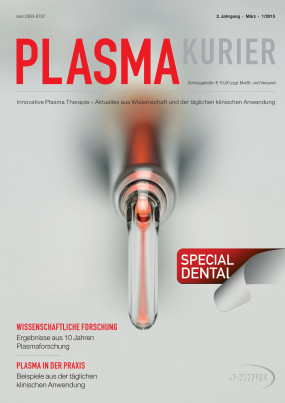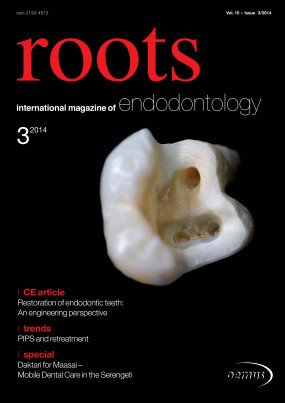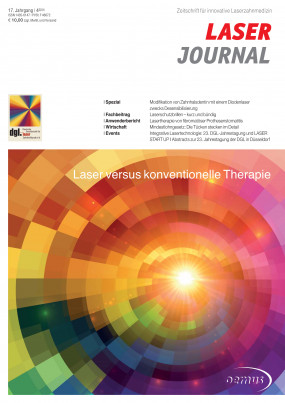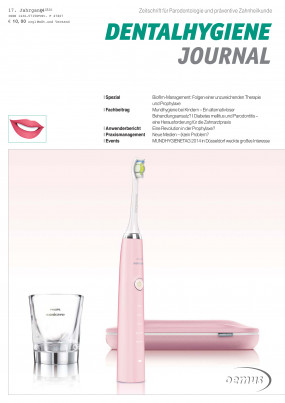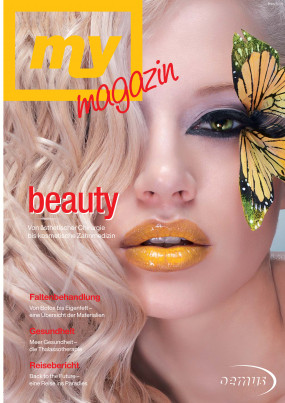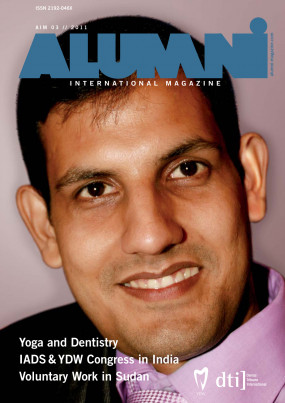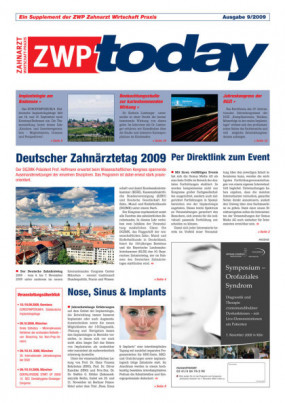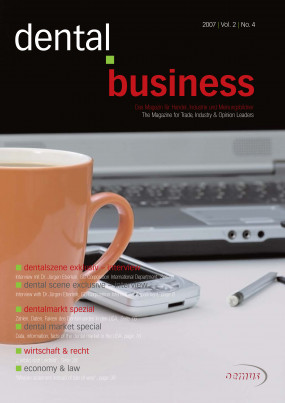Inhaltsverzeichnis
3
Editorial: Welcome to this year’s second edition of cosmetic dentistry!
Dr So-Ran Kwon, Co-Editor-in-Chief, President, Korean Bleaching Society, Seoul, Korea
Under the great leadership of AAAD President Dr Sim Tang Eng, the 11th Biennial Asian Academy of Aesthetic Dentistry Scientific Meeting was successfully held in Kuala Lumpur, Malaysia, from 14 to 17 May 2010. The meeting highlights were the four international keynote speakers: Dr Rhys Spoor (USA), Dr Didier Dietschi (Switzerland), Dr Mauro Fradeani (Italy) and Dr Galip Gurel (Turkey) presented lectures on direct composite restorations in the anterior and posterior region, as well as on all-ceramic restorations and porcelain laminate veneer restorations. The lectures and the well-organised, hands-on courses actively engaged -participants, and were received with great appreciation...
6
The Inman Aligner - An effective tool for minimally invasive cosmetic dentistry (Part I)
Dr Tif Qureshi, UK
Traditionally, cosmetic dentistry has always been faced with the challenge of treating poorly aligned teeth. Treatment options available for mildly and moderately crowded teeth include orthodontics and restorative dentistry. Many patients have chosen the restorative approach, for example por-ce-lain veneers, over orthodontic techniques because of longer treatment times combined with -either unsightly labial wires and brackets or the -expense of ‘invisible’ braces...
14
There are times when it becomes necessary to remove the cemented prosthetic restoration from one or more implants and the prosthesis is not amenable to conventional crown and bridge removal devices. In order to remove these prostheses, we need to gain access to the abutment screws by drilling through the crown or bridge. The challenge is to create the smallest possible access holes and to do this with a minimum of clinical time and effort. This article will describe a simple method for constructing and using a device to guide the development of appropriate access holes in the implant prosthesis...
18
The traditional method for correcting a gummy smile with too high a gum-to-teeth -ratio is enormously invasive. It involves cutting and lifting the gum tissue back in order to remove bone, after which the gums have to be sewn back in place.
24
The aesthetic rehabilitation of patients with functionally compromised dentition frequently involves a multidisciplinary approach, incorporating several different treatment modalities. A correct aesthetic and functional diagnosis with an appropriate treatment plan, as well as careful material -selection and application, are critical factors in the successful restoration...
28
In vitro bleaching study with a 20 % hydrogen-peroxide system
Dr Daniel C.N. Chan, Dr Albert Kwok-Hung Chung, Dr William D. Browning & Dr So-Ran Kwon, USA
While nightguard vital bleaching is the most used treatment modality for whitening of -discoloured teeth, in-office tooth whitening pro-cedures that use a concentration of higher than 10 % carbamide peroxide have been advocated as acceptable alternatives. Patients often choose in-office bleaching when they desire more rapid whitening of their teeth and/or when they do not desire to wear bleaching trays for at-home techniques.1 Although manufacturers indicate that most in-office bleaching agents can be used without light irradiation, studies have reported that light activation can enhance the results of the bleaching procedures.2 The light energy increases the rate of hydrogen peroxide degradation to form oxygen free radicals, leading to an enhancement of the bleaching process...
34
We’ve all heard the term “gold standard” applied to many items in our everyday lives as well as those used in our practices. For the sake of discussion, we’ll define “gold standard” as the product in a specific category that reaches the highest level of achievement sought after by all competitors. But is this nebulous concept static or dynamic? In my view, it has to be dynamic in our fast-changing world. Here are some gold standards in general dentistry and my view on whether they need to be updated...
36
You can’t always get what you want (unless you ask clearly!)
Laura Kelly, USA and Images: Dr Jeff Morley & LK Dental Studio, USA
Let’s be honest: There are times when your laboratory technician simply doesn’t deliver what you envisioned so clearly in your mind - a bit more translucency or a specific gingival colour, a minor mesial rotation on that bicuspid, or an occlusal table that’s just a little too wide...
40
IDS 2009 showcased the impressive advancements in CAD/CAM dentistry. For private dentists, however, there is much uncertainty regarding response to these developments. cosmetic dentistry spoke with Prof Albert Mehl, -currently Guest Professor at the Centre for Dentistry and Oral Medicine at the University of Zürich, about whether investing in CAD/CAM pays off and for whom.
42
Minimally invasive anterior restorations with non-prep veneers
Dr Harald Streit & Bernhard Hellmuth, Germany
How many people would like their teeth to look more beautiful? And how many of them avoid dental treatment merely because they fear that they have to sacrifice healthy tooth structure to achieve an -aesthetic improvement?
46
Thus far, dentists and dental technicians have used a wide range of products for the fabrication of temporary restorations. Now, Ivoclar Vivadent has -developed the Telio system, a product solution for -temporary restorations that offers users coordinated products and meets the requirements of dentists, CAD/CAM users and dental technicians alike...
